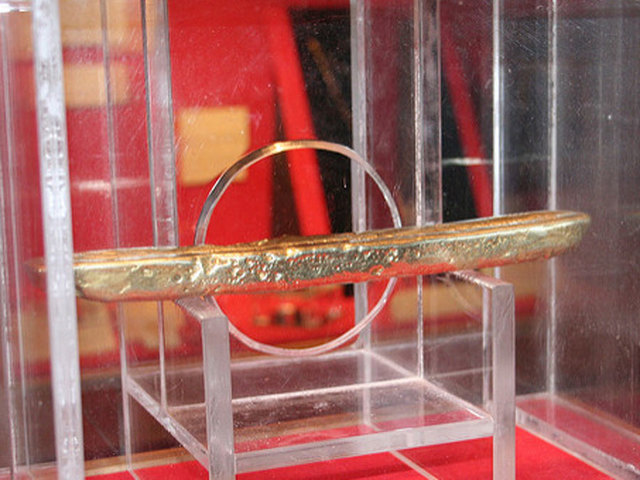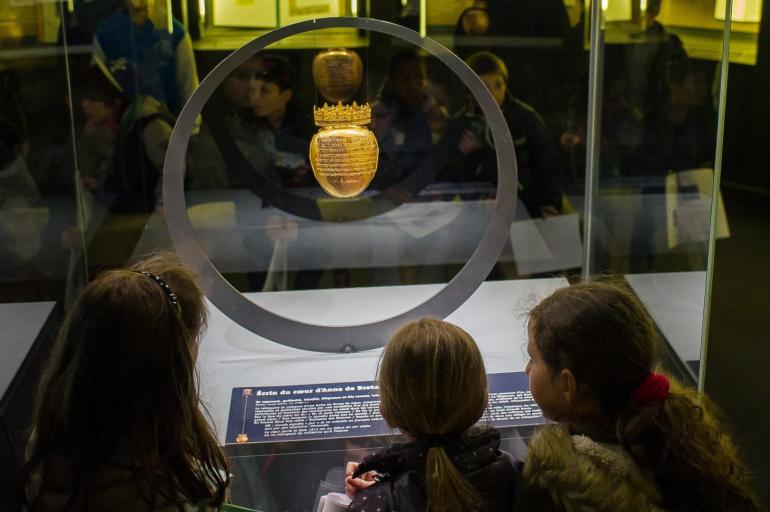German museum and auctioneer Im Kinsky tussle over looted glass goblet
https://www.theartnewspaper.com/news/museum-auctioneer-tussle-over-looted-goblet

German museum and auctioneer Im Kinsky tussle over looted glass goblet
Object was returned to consigner not museum from where it was looted at the end of Second World War
CATHERINE HICKLEY – June 6, 2018
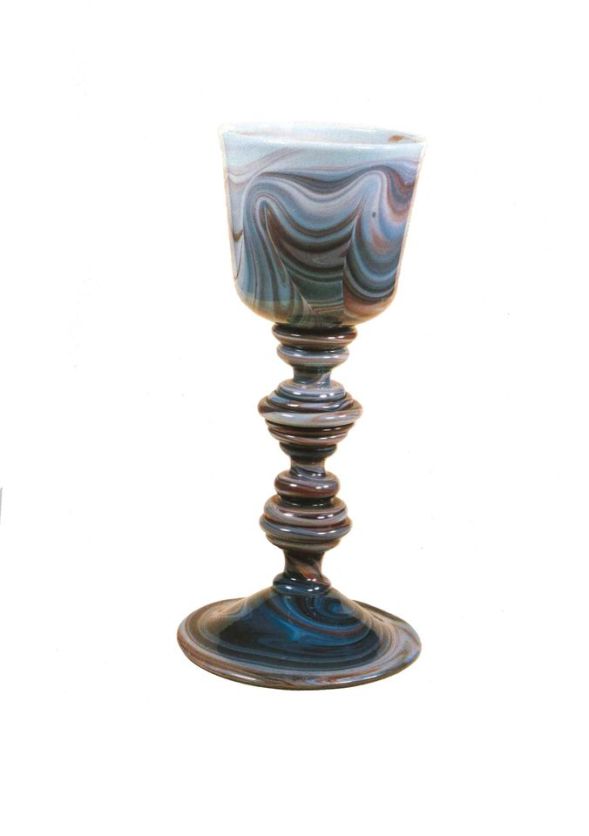
A multicoloured marbled glass goblet dating from around 1800, which was stolen at the end of the Second World War, is the subject of a dispute between the Vienna auction house Im Kinsky and Berlin’s Märkisches Museum.
The museum bought the goblet at auction in 1890 along with eight similar glass objects, all of which were looted in the chaos at the end of the war. Little was known about the goblet’s history until it was offered for sale at the Glasgalerie Michael Kovacek in 1990, according to Im Kinsky’s lawyer Ernst Ploil, on consignment for a German seller. The museum tried to recover the glass at that time, but Kovacek failed to stop the sale.
The goblet surfaced again this year at Im Kinsky in Vienna, where Kovacek and Ploil are managing partners. In the catalogue for the auction on 25 April, the provenance history included the brief description “Museum Berlin”.
At the request of Ulf Bischof, the Berlin lawyer representing the Märkisches Museum, Im Kinsky withdrew the goblet from the auction and returned it to the consignor. The museum then offered to pay a “finder’s reward” of €5,000 to avoid a legal battle but the consignor rejected the offer, saying he had another potential buyer who was offering €48,000.
“Our client is deeply concerned by this behaviour,” Bischof says. “It is unprecedented that an auction house knowingly accepts a stolen museum work on consignment and uses a cryptic ‘Museum Berlin’ provenance for advertising.
“Collectors as well as the museum community should be alerted to such questionable business practice.”
Bischof says the goblet was produced at Zechlinerhütte, a former glass-making centre in Rheinsberg, north of Berlin.
It is not known exactly how it came to be lost in the Second World War, but many Berlin museums stored their collections in bunkers and other bomb-proof locations to protect them from air raids. Some of these stored treasures were plundered by the Red Army; others were looted by ordinary German citizens.
Ploil argues that statutes of limitations would hinder any efforts by the museum to pursue its claim in court and that the previous buyers bought the goblet in good faith, thereby obtaining legal title.
“The fact that the goblet was previously in the museum was known, but no one knew it was stolen,” Ploil says. “Any restitution claim for this has expired.”
Bischof says that the Märkisches Museum still holds legal title. He insists that whoever buys it now cannot claim a good-faith purchase because the seller is aware of its tainted past. Any attempt to sell the goblet without informing the buyer in full of the ownership claim may be liable for fraud, he says.
Bischof also argues that even though the theft itself is time-barred under statutes of limitation, laws against concealing stolen goods are still applicable. He has informed Austrian law enforcers.
Court upholds Italian art dealer’s conviction over rare church murals
![]()
Court upholds Italian art dealer’s conviction over rare church murals
Gianfranco Becchina, who is now 80 years old, was not present at Friday’s hearing in Athens, but his lawyer told the court that her client, being an expert in antiquities, was unaware of the murals’ importance and had no role in their theft. Judges rejected the appeal, upholding a conviction against Becchina on charges of receiving stolen goods.
The case dates to 1978, when a known thief from Pyrgos in the northwestern Peloponnese broke into the Church of Palaiopanaghias and chiseled off four 16th century paintings of the saints Ermolaos, Nikitas, Makarios of Egypt and Nestor, causing extensive damage to the interior of the listed monument. The man was sentenced to life in prison in 1984 over a string of unrelated thefts, but the four murals remained missing for years until they were discovered in 2001 during an investigation into a gallery in Basel, Switzerland, run by Becchina and his wife, Ursula Juraschek.
There, Swiss authorities discovered a trove of stolen Italian antiquities, as well as the four Greek paintings that are believed to belong to the so-called School of Thebes movement.
The paintings were repatriated to Greece in 2010 and are now on display the Byzantine Museum in Athens. Their total value has been estimated in the range of 160,000 euros.
Court dismisses claim that Norval Morrisseau painting is fake

Court dismisses claim that Norval Morrisseau painting is fake
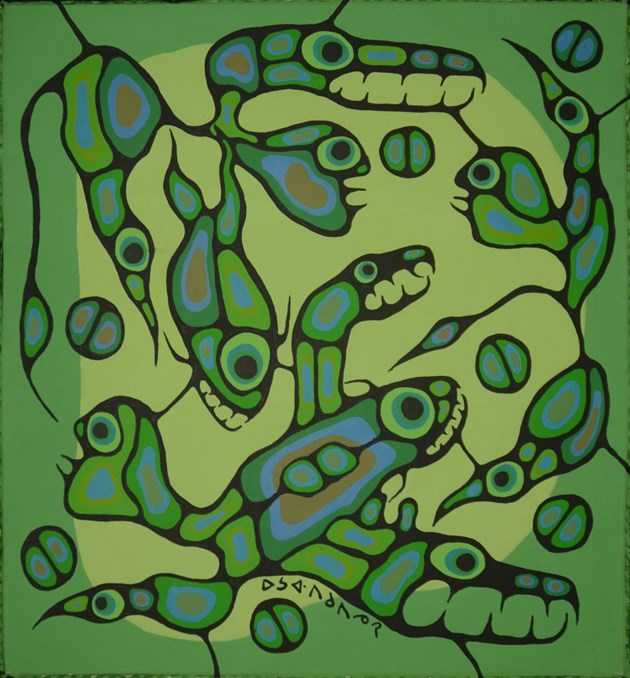
TORONTO — In a case that has been watched closely by the art world, a Superior Court justice has ruled that, “from the law’s point of view,” a painting sold by an Ontario art gallery to Kevin Hearn of the Barenaked Ladies is “a real Norval Morrisseau painting.”
The judge also found that the evidence he heard did not “in any conclusive way” connect Spirit Energy of Mother Earth to an alleged fraud ring in the Thunder Bay area that produced Morrisseau fakes.
“Counsel for Hearn went to considerable effort in gathering evidence and calling witnesses to establish that a group of fraudsters worked for a number of years in northwest Ontario, and that as a consequence of their prolific activities a substantial number of Morrisseau forgeries exist,” Justice E.M. Morgan noted in his Reasons for Judgment, issued last month.
He noted, however, that “no witness identified this particular painting as having been produced by a member of the northern Ontario-based criminal enterprise.”
Hearn, keyboardist with the Barenaked Ladies band, sued Toronto’s Maslak-McLeod Gallery, alleging the work he bought in 2005 was counterfeit.
During the civil trial that concluded in February, the court heard from an art expert who has studied Morrisseau’s work extensively. She concluded the piece was an imitation as it contained numerous elements that were different from Morrisseau’s standard approaches.
However, an expert in handwriting analysis testified that, with “reasonable certainty,” he believed Morrisseau’s signature on the painting was authentic.
In his written Reasons for Judgment, issued on May 24, Justice Morgan noted how some of the testimony illustrated “the most fundamental problem in attempting to authenticate a purported Norval Morrisseau painting: there is more than one Morrisseau, or more than one Morrisseau style, that can emerge or submerge at any time.”
The judge said Spirit Energy of Mother Earth—is one more painting “that is possibly an authentic Norval Morrisseau and possibly not. As a matter of law, what is important is that a tie goes to the Defendants. Where a court is left in doubt because the relevant burden of proof has not been satisfied, the ‘fact’ sought to be proved is in law not true.”
Morrissesau, born in 1932 on the Sand Point Reserve near Beardmore, is credited with originating the Woodland School of Indigenous art.
He died in 2007.
Former Egyptian Museum official to be prosecuted for theft

Former Egyptian Museum official to be prosecuted for theft
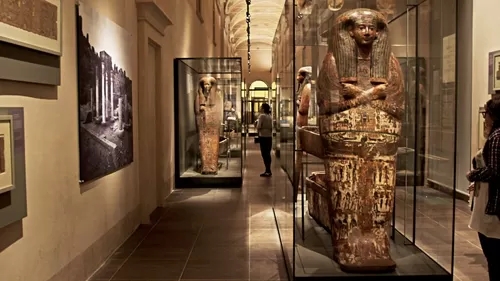
The administrative prosecutors received a tip from the legal department in the High Council of Antiques that an ancient item weighing 22 grams of pure gold had been reported missing, after being portrayed in the hall No. 44 located on the ground floor of the Egyptian Museum.
Investigators charged the former official, who claimed her innocence and informed police that the item may have been lost during the chaos and political turmoil that the country witnessed in the aftermath of the 2011 revolution.
The item is still missing, but the Egyptian police are widely exerting their efforts to locate it.
The Egyptian police and prosecutors stressed the importance of properly handling precious antiques from Egypt’s ancient civilization because they are not just a great part of Egyptian history, but humanity as a whole.
Art Underworld: South Florida Becomes Hot Spot for Stolen, Fake Art
Art Underworld: South Florida Becomes Hot Spot for Stolen, Fake Art
May 12, 2018
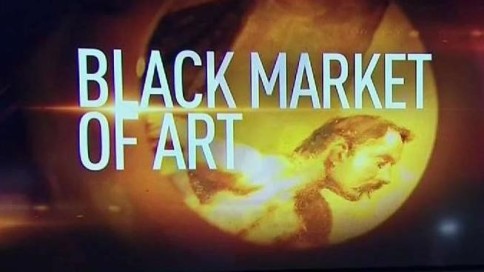
The underground art world is thriving with pieces from all different countries getting smuggled into the United States. South Florida has become a hot spot for stolen art, according to federal agents.
Hialeah artist Abel Quintero is aware of this growing black market of art, that’s why he takes an extra step to protect his works of art.
“I sign and use my own thumbprint,” Quintero explained. He marks his contemporary art pieces with his own thumbprint to avoid the spread of fakes. The rising number of fakes and forgeries has worsened with technology. This has prompted the Department of Homeland Security to train its agents to detect bogus artworks that try to pass as the real thing.
“Frankly, I think Miami is a big risk. There is a serious, strong art community here. Any place where you have galleries, museums…I think you’ll probably see a larger amount of the underground art market,” explained Special Agent in Charge Mark Selby, Homeland Security Investigations.
Russ Kodner, the owner of Kodner Galleries in Dania Beach, is always on the lookout for fakes.
“There are people that walk through our doors every day, bringing items to get appraised, bringing in items to get converted into cash and a lot of times we turn them away,” Kodner explained.
Art and cultural property crime — which includes theft, fraud, looting, and trafficking — have estimated losses in the billions of dollars annually. At one point, the federal government said it’s the third highest-grossing criminal trade behind drugs and guns. Into Custody at Florida Airport
Thieves also smuggle in historical artifacts stolen from other countries.
Homeland Security officials said they have been able to find and return more than 8,000 stolen items in the last 10 years. Thieves are taking precious items, Agent Selby said. Earlier this year, someone at Miami International Airport tried to smuggle a Corinthian helmet which dates back to 500 B.C.
“There’s a lot of history that’s being stolen from countries all over the world. A lot of it ends up here in the United States,” said Agent Selby. “Once they remove those items, they haven’t had a chance to be studied where they were found. It’s lost forever. There’s no way you can get it back.”
First-of-Its-Kind Global Arbitration Court for Art Disputes Launching June 2018
PRNewswire
First-of-Its-Kind Global Arbitration Court for Art Disputes Launching June 2018
Pryor Cashman – May 07, 2018
On June 7, 2018, the Netherlands Arbitration Institute (NAI), in conjunction with The Hague-based Authentication in Art (AiA), will launch a new, specialized arbitration and mediation tribunal exclusively dedicated to resolving art law disputes. The “Court of Arbitration for Art” (CAA), as the tribunal will be known, will conduct proceedings around the globe, addressing the full spectrum of art disputes, including authenticity, contract, and chain of title disputes, copyright claims and more.
Conceived and advanced by William Charron, Co-Chair of the Art Law practice at New York-based law firm Pryor Cashman and an Advisory Board member of AiA, the CAA was created to address the difficulty courts and juries often face when confronted with art law cases, where issues of forensic science, provenance research, and connoisseurship are often at issue.
“In cases involving authenticity questions, the market need not – and often does not – accept a court’s finding that a work is, more likely than not, authentic or fake,” Charron explained. “The idea behind the CAA was to ‘flatten the learning curve’ in these – and similar – kinds of cases by having experienced art lawyers be the deciders. Practitioners should be better equipped to understand and more properly weigh the evidence in a manner that the market will accept,” he said.
Charron formed a small working group of fellow lawyers in New York, including Luke Nikas from Quinn Emanuel Urquhart & Sullivan, LLP; Megan Noh from art law boutique Cahill Cossu Noh & Robinson LLP; and Judith Prowda from Stropheus Art Law and the Sotheby’s Institute of Art, to develop the CAA and draft what has become the tribunal’s new codified rules (effective as of April 30, 2018).
The primary objective of the group’s work was to arrive at rules that would provide for both market legitimacy and decisional accuracy. “Everything we analyzed came back to the questions of whether this is something the market will likely accept, and whether this is something that best positions the tribunal to render the right results,” Prowda said.
A particularly unique facet of the CAA is that the more traditional model of competing and advocating experts will not always apply. Although the parties will be free to retain their own testifying experts on many issues, in authenticity disputes the tribunal, not the parties, will appoint its own forensic and provenance experts from an internationally recognized pool. “The idea is to give the most comfort possible to the market that authenticity decisions are based on truly neutral expert analysis,” Nikas explained.
Another important aspect of the CAA’s rules is that, while proceedings will be private and confidential, as with traditional ADR, the final arbitration decisions will be published and will identify the art at issue while maintaining the parties’ anonymity. “This was deemed essential to ensure market understanding and acceptance of the results,” Noh said.
The CAA will be implemented under the auspices of NAI. While the arbitrations will be deemed “seated” in The Hague, proceedings can be conducted anywhere in the world and are enforceable under the New York Convention and other international conventions.
The newly-released CAA arbitration rules can be viewed here.
Man pleads guilty in 2010 Key West gold bar theft from Mel Fisher Maritime Museum
KEY WEST, Fla. (AP) — One of two men accused of stealing a Key West museum’s 17th-century gold bar in 2010 has pleaded guilty.
Appearing Friday at Key West’s federal courthouse, Richard Steven Johnson, of Rio Linda, California, pleaded guilty to conspiring to steal an object of cultural heritage and stealing a major artwork.
The 74.85-ounce gold bar valued at $556,000 was found in 1980 on a 1622 Spanish galleon wreck site off the Florida Keys by late shipwreck salvor Mel Fisher.
Until the theft, the bar was displayed in an acrylic case at the Mel Fisher Maritime Museum where visitors could touch it. Investigators proved that Johnson broke the case.
Johnson’s sentencing date was not set. Alleged co-conspirator Jarred Alexander Goldman, Palm Beach Gardens, Florida, is scheduled for trial next month.
No information is available regarding the bar’s status.
Police allege son flew from England to damage $3 million painting in Aspen owned by his family
SUMMIT DAILY
Police allege son flew from England to damage $3 million painting in Aspen owned by his family
Judge issues arrest warrant for suspect in 2017 art slashing
A $3 million painting slashed by a knife-wielding man nearly a year ago at an Aspen art gallery was vandalized by the son of the painting’s owner, according to law enforcement sources and court documents.
Nicholas Morley, 40, of England was charged Wednesday with felony criminal mischief in connection with the bizarre incident, and a Pitkin County District Court judge signed a warrant for Morley’s arrest the same day.
Morley is the same man convicted 10 years ago of crashing into and killing an elderly couple in Macedonia during the running of a European car race for the wealthy called the Gumball 3000 Rally. He was referred to in news articles about the incident as a millionaire playboy property developer.
“He is the person charged with directly damaging this painting,” Aspen prosecutor Don Nottingham said Wednesday night.
Morley did not return a phone message or an email Thursday seeking comment. Aspen attorney Ryan Kalamaya confirmed Thursday that he represents Morley, but declined to comment further. Morley’s whereabouts are unknown, Nottingham said.
The painting slashing occurred May 2 at the height of Aspen’s quiet, spring offseason when a man wearing sunglasses, black jeans, a black jacket, a hat and a full beard entered the Opera Gallery at the base of Aspen Mountain at 4:16 p.m.
The slightly built man wore a glove on his left hand, which he used to open the door and drop a 15 inch-by-4 inch piece of wood inside the gallery’s front door frame as he entered, according to the affidavit and video of the incident released by the Aspen Police Department.
A woman working in the gallery told police she saw the man after he entered, greeted him and asked how she could help him, according to the arrest warrant affidavit.
“(The gallery employee) stated the man looked at her with a ‘surprised’ look,” the affidavit says.
However, the man never stopped and instead walked directly up to an 8½ foot-by-6½ foot painting called “Untitled 2004” by New York artist Christopher Wool, which was hanging on the wall opposite the entrance, according to the video and the employee’s account of the incident. The suspect then used his ungloved hand to take a knife or other cutting object out of his jacket pocket, slash the Wool painting twice, then turned around and ran out of the gallery, grabbing the piece of wood with his gloved hand on the way out, according to the employee’s account and the video.
Video surveillance footage from other cameras in the downtown core caught the man running east past City Market and disappearing into the neighborhoods in Aspen’s east end, police have said.
STRANGE PHONE CALLS
The painting was the sole item being sold on consignment at the gallery at that time, Opera Gallery owner Gregory Lahmi has said. It was listed for sale at $2.95 million amid other works in the gallery by Pablo Picasso, Salvador Dali, and Marc Chagall.
The incident prompted Lahmi to recall three phone calls he had received in the weeks prior to the slashing that was variously described as “strange,” “suspicious” and “bizarre,” according to the affidavit.
The first occurred at the beginning of April 2017 when a man with a blocked phone number called the gallery’s main line and asked if they had any works by Andy Warhol or Christopher Wool, the affidavit states. The second took place April 16, 2017, when a man asked questions about the gallery itself, including whether Lahmi was alone, if the Wool painting was being exhibited, how a person would enter the gallery and if the front door was closed, according to the document.
The man declined to identify himself during the second call, though the questions he posed at that time prompted Lahmi to believe he was talking to the Wool painting’s owner, the affidavit states.
The third call happened April 26, 2017, when a man called, asked if the Wool painting was still available and said he would be in next week to see it, though he again declined to give his name, the affidavit states. Lahmi told police he believed the same man with a “slight British accent” called all three times. Lahmi also said the Wool painting was not listed online, only known to be available to a handful of collectors and that “Wool’s artwork was a specific taste in the art industry,” according to the affidavit.
THE SLASHING AFTERMATH
Aspen Police soon discovered after the incident the painting was owned by Harold Morley, 74, of Barbados, through a trust called Fallowfield Ltd.
Harold Morley told an Aspen police detective days after the incident that few people in the world knew about his connection to the Wool painting. He also said that he and his son, Nicholas, owned Fallowfield, a holding company that bought and sold art out of Barbados, the affidavit states.
In a subsequent conversation on May 9, 2017, Harold Morley changed his story and told the detective that Nicholas Morley was not a co-owner of the trust. Instead, he said “that Nicholas just took care of a few contracts for Harold when asked,” according to the affidavit.
In the case of the Wool painting, Nicholas Morley “just signed for the consignment,” Harold Morley said, according to the document. Harold Morley also said that neither he nor his son recognized the suspect in the painting slashing.
On May 5, 2017, Harold Morley sent a letter to the Opera Gallery stating that the painting “can be easily restored” and that he did not plan on filing an insurance claim. Further, he asked the gallery to put out a statement “refuting” an Aspen Times story about the slashing “and stating that it was only a minor incident,” according to the affidavit, which quoted the letter.
“In the same vein the police investigation should be calmed down and they be quickly informed that Fallowfield is very relaxed about the whole affair since Wool is an appreciating asset and the repairs will be all but invisible,” Harold Morley’s letter states, according to the affidavit.
The letter also requested that Opera Gallery staff “play the whole affair down as over-enthusiastic reporting,” the affidavit states.
“It is a shame that as owners we were not consulted before the news story went public,” the letter states.
A day later, Harold Morley wrote a text message to the gallery’s manager, asking to “defuse any idea that the painting is destroyed or even devalued,” according to the affidavit. He said he wanted to block or remove the online video of the slashing, restore the painting, sell it and “if asked by anyone we laugh it off as actually making the work intrinsically more valuable.”
“We could even put it up for sale now for $3.5m on the basis it is ‘famous,’” Harold Morley wrote, according to the affidavit. “Since we are not making an insurance claim there is no reason why the recollection of the incident should not be eliminated as quickly as possible from staff and public.
“Then it just becomes ‘folklore.’”
An email sent Thursday to Harold Morley from The Aspen Times was not returned.
On May 10, Nicholas Morley wrote an email to the gallery manager, saying that Fallowfield did not plan on holding Opera Gallery liable for the slashing incident. He also made a couple of requests.
“It would appear possible based on the video footage (and is our judgment) that this was an accident rather than malicious damage,” he wrote, according to the affidavit. “(We) kindly suggest that Opera either A: issue a press release that the incident was, in fact, an accident, or B: issue no further press comments.”
Finally, Morley suggested, “that the Police Investigator be advised accordingly with our mutual wishes and the incident be reclassified.”
FROM LONDON TO COLORADO
On May 18, 2017, Aspen police spoke with a corporate security agent for Delta Airlines, who reported that Nicholas Morley had flown from London’s Heathrow Airport to Minneapolis-St. Paul on May 1, according to the affidavit. He booked the ticket and flew under the name “Nikola Marley,” through an airport gate agent caught the discrepancy when Morley checked in and presented a passport with his real name on it.
Morley was fingerprinted upon entry into the United States on May 1, and his passport number was recorded, according to a Homeland Security agent quoted in the affidavit.
Morley then continued on another Delta flight from Minneapolis to Denver. Detectives with the Minneapolis airport police and the Denver airport police both found video footage of Morley arriving at the locations, the affidavit states.
Further, the Denver airport police detective discovered that Morley rented a blue 2017 Hyundai Velostar at the Denver airport under the name Nikola Marley. He returned the car on May 4 after driving 246 miles, according to an Alamo Rent-A-Car representative quoted in the affidavit.
“It should be noted that a one-way trip from Denver to Aspen is approximately 223 miles,” the affidavit states.
Nottingham, the prosecutor, declined to comment about the discrepancy. However, others close to the investigation said the fact that Morley’s rental car did not travel far enough to go to Aspen and back to Denver coupled with a lack of any official hint of his presence in Aspen was one of the reasons the investigation took nearly a year.
Morley flew from Denver to Minneapolis on May 4, then continued on to London, according to the affidavit.
Aspen Detective Ritchie Zah confirmed that Morley used a business credit card registered to himself to pay for the rental car, that he stayed one night at the Ramada Inn on Colfax Avenue in Denver and that he sent an email from the Ramada hotel, the affidavit states. He used his wife’s credit card to pay for the Ramada room, though she later told Aspen police that neither she nor her husband had been to the United States recently and that she didn’t use the card on May 1 or authorize her husband to use it.
Lastly, the person who saw the man slash the painting identified Morley as the person who did it after seeing his picture online. The person reported getting “the chills” when viewing his photo and pointed out his “crooked nose, his jawline and the lighter colored mustache” as proof that it was him, the affidavit states.
FATAL CRASH IN MACEDONIA
Zah spoke with Morley on May 9, 2017, and he denied that he had been in the United States that month, according to the affidavit. He said he did not remember the last time he had visited the United States though he thought it was earlier that year, possibly in January or February.
Morley is charged with criminal mischief between $1,000 and $5,000, which is the lowest level felony in Colorado criminal law. That charge is because it cost between $1,900 and $2,500 to repair the painting, according to the affidavit.
Pitkin County District Judge Chris Seldin signed Morley’s arrest warrant Wednesday and ordered that he be held in lieu of a $50,000 cash-only bond when arrested.
In 2007, Morley was at the wheel of a Porsche 911 that was participating in the Gumball 3000 Rally, a car race with a more than $50,000 entrance fee and ran from London to Istanbul and back, according to media reports. Morley, variously identified as a property developer, a millionaire, and a playboy, crashed into a car carrying an elderly couple in Macedonia during the race, killing both.
Evidence accepted by a judge in his case indicated Morley was driving 100 mph at the time, though his family later released a statement disputing that and saying he was going 47 mph. Morley spent 40 days in a Macedonian prison before being convicted of the deaths.
He received a two-year suspended sentence for the conviction and was allowed to return to London, according to media reports. Morley later told a Manchester newspaper he couldn’t have avoided the crash and said he was not a millionaire or a playboy.
Police: Pilfered pin sold for $68
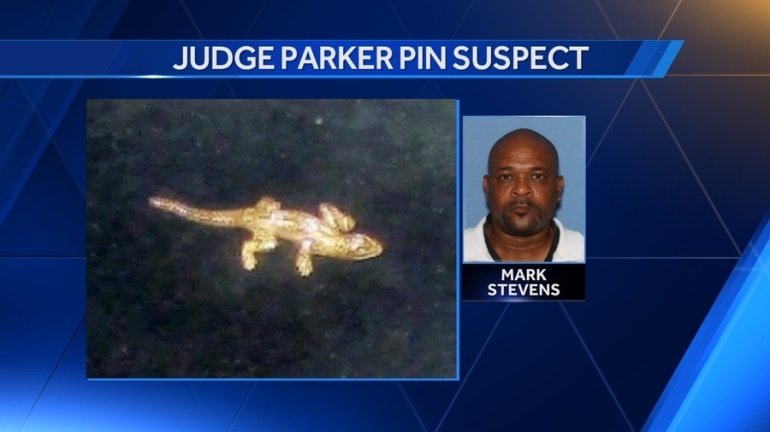
Police: Pilfered pin sold for $68
Suspect charged in museum theft
Dave Hughes – April 24, 2018
FORT SMITH — Police say a handyman at the Fort Smith Museum of History stole Judge Isaac C. Parker’s gold-and-diamond lizard-shaped pin from a display case and sold it at a rare-coin dealer shop four blocks away for $68.50.
Mark Craig Stevens, 58, of Fort Smith has been charged with theft of the pin and is scheduled to be arraigned on the charge Wednesday in Sebastian County Circuit Court. Stevens was free on bond, according to court records.
Theft is a Class D felony punishable by up to six years in prison.
The criminal complaint filed against Stevens alleges he stole the pin March 7 and sold it the same day at the DBKJ Numismatics rare coin and currency shop at 711 Garrison Ave. The museum is at 320 Rogers Ave.
A police report said the pin had a replacement value of $1,500, although a police affidavit said two local jewelers valued the piece at $2,478 and $1,895.
Museum Executive Director Leisa Gramlich told police she discovered March 22 that the 1¼-by-1½-inch pin was missing. The pin – a gift to the 19th-century federal judge from his wife, Mary – was one of the few personal possessions of Parker’s in the museum’s collection.
Gramlich noticed that a display case containing the pin was moved slightly from the wall. Investigating, she found that the hasp of the cabinet lock had been pried loose and that the pin was gone.
Two days later, after the story of the stolen pin appeared in the press, Tamara Masters with DBKJ Numismatics contacted Gramlich by email to report the store had the pin, and it was returned to the museum.
Masters told police that Stevens was waiting at the door of the shop when she arrived on March 7 and that he sold the pin for $68.50. The police report said she knew him by sight and had dealt with him on several occasions, and that he did odd jobs at the shop.
Gramlich told police that Stevens had worked at the museum on March 7, changing light bulbs. She produced a copy of the check given to Stevens that day for the work.
A warrant charging Stevens initially with theft by receiving was issued on April 12, and he was arrested the next day at the home of an acquaintance in north Fort Smith. The charge was amended to theft when the case was transferred from district to circuit court.
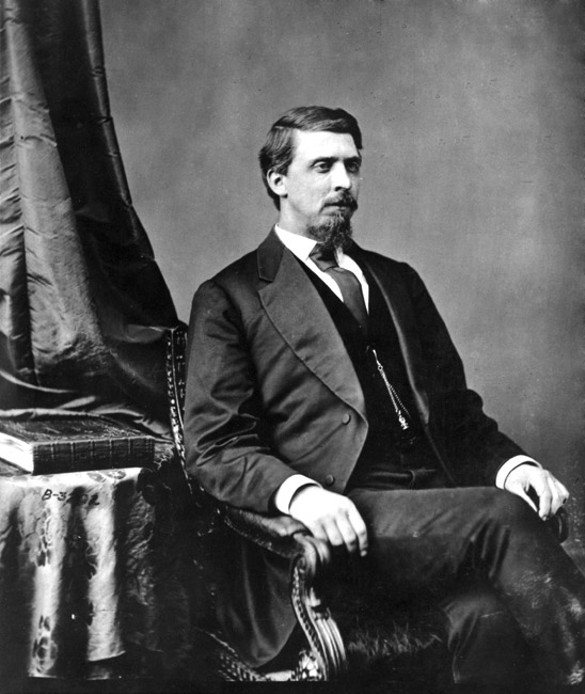
Parker, known as the “Hanging Judge,” presided over the federal court in Fort Smith from 1875 to 1896, during which time he condemned 160 men and four women to hang, according to the Encyclopedia of Arkansas History and Culture. Of that number, 79 were executed.
ANCIENT QUEEN’S HEART ENCASED IN SOLID GOLD RECOVERED BY POLICE AFTER MUSEUM HEIST
http://www.newsweek.com/french-police-recover-stolen-500-year-old-queens-heart-898869
Newsweek
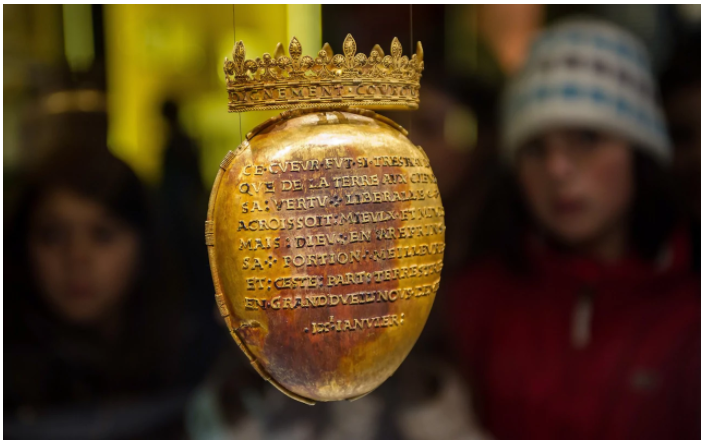
ANCIENT QUEEN’S HEART ENCASED IN SOLID GOLD RECOVERED BY POLICE AFTER MUSEUM HEIST
The unusual relic was taken from the Thomas Dobrée Museum in the northwestern city of Nantes earlier this month, the BBC reported.
Two men were arrested on Saturday and led police to the buried treasure near the city of Saint Nazaire. Authorities had previously issued a public plea for the return of the heart, fearing it would be melted down for gold with the criminals unaware of its historic significance.
Breaking through a museum window to access the loot, the thieves escaped with precious items despite setting off an alarm. Though there had been suspicions that Breton nationalists might have been behind the theft, police said petty crime is the most likely motive, The Telegraph reported.
Anne of Brittany died in 1514 aged just 36, though her short life was a busy one. The daughter of Francis II, Duke of Brittany, Anne became Duchess of the region at just 11 years old when he died in 1488. Her standing and reported wealth made Anne a sought-after wife, and she was first married to Holy Roman Emperor Maximilian I in 1490.
The marriage sparked a war between Brittany and Charles VIII, the king of France, who wanted to subjugate the neighboring region. Upon defeating Anne’s army, he forced her to agree to marry him instead. This was formalized in 1492 when Pope Innocent VIII annulled her marriage to Maximilian.
Charles died in 1498 when Anne was just 18. Though still young, her marriage to Charles produced seven children. However, only one child—Charles—lived longer than a month, but died aged 3.
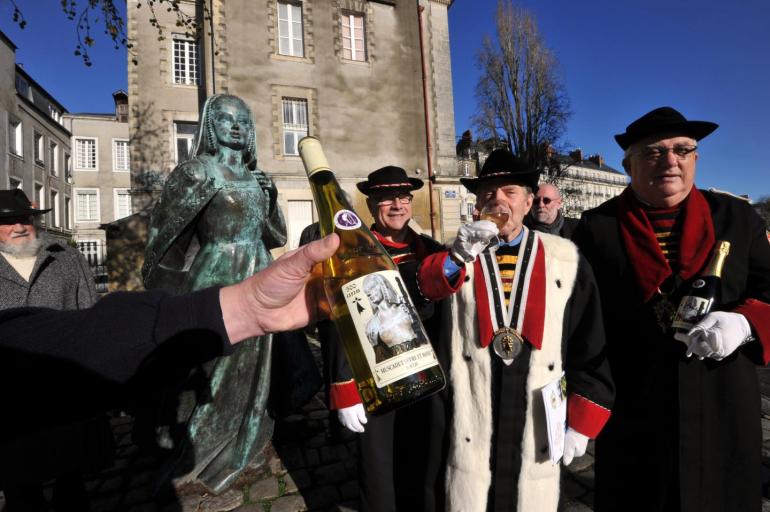
After the king’s death, Anne married Charles’s cousin Louis XII, who succeeded to the throne, making her the only woman in history to have been married to two French kings. She went through another nine pregnancies with Louis, giving birth to just two children that survived.
As a child, Anne was also briefly betrothed to the young Prince Edward of England. One of the “Princes in the Tower,” Edward disappeared with his brother Richard in mysterious circumstances while under the care of their uncle, the Duke of Gloucester, at the Tower of London. The Duke later crowned himself King Richard III.
Following tradition, Anne was buried alongside other French royals in the Saint-Denis Cathedral outside Paris. To show that her heart still belonged to Brittany, Anne requested it be removed and sent to her homeland upon her death. Her husband Louis was later buried alongside her.
During the French Revolution, the new government ordered the relic be sent to Paris to be melted down for gold but was instead kept safe in France’s national library. It was later sent back to Nantes and eventually found a home at the Thomas Dobrée Museum.




